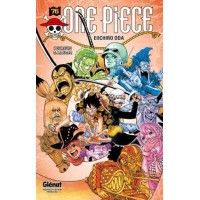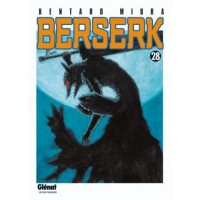Manga Genres Explained: From Shōnen to Josei
From the fervor of Shōnen to the maturity of Josei, Japanese manga has captured hearts far beyond Japan's borders. But do you really know how to differentiate a Shōjo from a Seinen? If the world of manga seems as expansive as the Japanese archipelago itself, join us in this blog article for a journey through its genres and sub-genres. Whether you're a casual observer, a newcomer eager to explore this captivating world, or a long-time fan looking to broaden your horizons, we hope this guide will be your treasure map. Prepare to weigh anchor and dive into the rich universe of manga!

Introduction
The global enthusiasm for manga continues to grow. Whether in Tokyo, Paris, or New York, bookstores are increasingly dedicating larger sections to this form of Japanese art, and adaptations into anime or films are drawing millions of viewers. But behind these colorful covers and bubble-filled pages lies a diversity of genres that can be intimidating for newcomers. Understanding these genres is like holding a compass in this ocean of creativity: it allows you to navigate more easily and find the treasures that will resonate most with you.
Yes, understanding manga genres is essential! Beyond simply knowing where a book might be shelved in a bookstore, each genre features its own themes, styles, and narrative approaches. This can, of course, influence your reading experience, and even introduce you to new aspects of Japanese culture. For example, did you know that Shōnen and Shōjo manga, although often grouped under the generic term "mangas for teenagers", offer very different perspectives on themes like friendship, love, and self-realization?
As you've likely gathered, the goal of our article today is to provide you with a comprehensive and accessible guide to the different genres and sub-genres of manga. Whether it's Shōnen, focused on action and adventure, or Josei, which explores more adult and complex themes, we will cover all the bases. You will also discover lesser-known but equally fascinating genres like Yaoi, Yuri, or even Kodomo.
1. Difference Between Manga, Anime, and Comic Books
Patience, dear readers! Before we set sail into the waters of manga genres, it's essential to understand the fundamental differences between manga, anime, and comic books. Indeed, these three forms of art, although connected by the thread of visual storytelling, have distinctions that greatly enrich our understanding and appreciation of each.
First off, allow me to rewind the tape—or rather, the roll of manga paper! If this feels like déjà vu, it's intentional: we've discussed this topic before. But let's revisit it, because even the good old songs deserve a replay. Manga is that extraordinary form of Japanese comic art, unique in its own right, which has you flipping pages from right to left, in contrast to Western comic books. It boasts a wide range of genres and is known for its narrative depth and jaw-dropping artwork. Manga often serves as the basis for anime adaptations but can also stand alone, exploring more complex themes or longer stories that may not be suited for other formats.
Next, anime is like your favorite manga taking a Red Bull: it's the animated version of these stories, often released after the manga has gained enough success to merit its own Netflix or Crunchyroll series. Although anime can also have original works not based on manga, it often shares similar genres and themes. However, anime offers a more sensory experience with elements like sound, color, and movement, which can either enrich or alter the impact of the original story.
Finally, comic books are sort of the all-you-can-eat buffet of the illustrated arts world. It's a broader term that encompasses all sorts of illustrated storytelling, including American comics and European graphic novels. Unlike manga, which often has genres as specific as a sushi bar in Tokyo, comic books are more generalist, akin to the frozen food aisle at a Picard store. And as a bonus, they are often in color, and you don't need to relearn reading from right to left!
In summary, with this clarification on the differences between manga, anime, and comic books, you are now equipped with a cultural compass to navigate the bustling ocean of mangas, animes, and comic books.
2. Major Genres of Manga
Now, let's get down to business. To fully appreciate the richness of the manga world, it's important to understand the major genres that comprise it. From Shōnen to Josei, each genre offers a unique palette of themes, styles, and narratives targeting different age groups and interests.
2.1. Shōnen
Shōnen is a genre of manga primarily targeted at a young male audience. This genre is arguably one of the most popular and recognizable in the manga world. It is characterized by themes of action, adventure, friendship, and self-improvement. Artistically, Shōnen stands out for its dynamic drawings and elaborately crafted fight scenes. While its core audience consists mainly of young men, the genre has a broad appeal that transcends age and gender barriers.
Some heavyweight examples in this category include "Naruto", which follows a hyperactive teenage ninja; "One Piece", which takes us on an epic quest for pirate treasure; and "Dragon Ball", which likely introduced an entire generation to the subtle art of screaming to get stronger. Each of these titles has not only dominated popularity charts but has also secured a place in global popular culture.
2.2. Shōjo
Shōjo is a genre of manga specifically oriented toward a young female audience, although its appeal is not limited to this demographic. This genre is particularly known for addressing themes centered around romance, interpersonal relationships, and complex emotions. The artistic approach of Shōjo leans towards delicate and aesthetically pleasing drawings, with great attention to detail, especially in characters' facial expressions and eyes. This focus aims to enrich the emotional experience of readers. While primarily targeted at young women, Shōjo has the ability to attract a broader spectrum of readers due to the depth of its characters and the complexity of its plots.
Iconic works like "Sailor Moon", "Cardcaptor Sakura", and "Fruits Basket" highlight not only the undeniable popularity of this genre but also the impressive range of themes and styles it can encompass. These hits have captured hearts worldwide, showing that the genre can transcend cultural barriers while offering captivating narrative diversity.
2.3. Seinen
Seinen is a genre of manga designed for an adult audience, with a particular inclination toward men. It stands out for its exploration of mature and often complex themes, such as politics, philosophy, and real-life dilemmas. It's not simply an evolution of Shōnen but rather a distinct genre that delves into darker and more nuanced reflections and situations. Artistically, Seinen leans toward a more realistic style, often featuring darker and more detailed drawings to match the gravity of the subjects covered. While the target audience is primarily adult and male, the genre also attracts those seeking more substantial and provocative reading.
Masterpieces of the Seinen genre like "Berserk", "Tokyo Ghoul", and "Akira" have not only captivated the Japanese audience but have also received triumphant acclaim globally. These titles perfectly illustrate the power, impact, and global reach of the genre. With often darker and complex themes, these works have become cultural landmarks that have not only shaped the world of manga but have also influenced pop culture and visual art far beyond Japan's borders.
2.4. Josei
Josei is a genre of manga that specifically targets an adult female audience. It is characterized by an in-depth exploration of themes often absent from younger genres, such as the challenges of daily life, complex relationships, and moral and social dilemmas. This genre stands out for its often more realistic and less stylized artistic style, enabling it to delve into more nuanced and delicate subjects with appropriate gravity. Although the target audience is clearly adult women, Josei has also gained traction among other reader groups who appreciate its thematic maturity and narrative complexity.
Flagship titles in the Josei genre like "Nana","Honey and Clover" and "Kuragehime" (also known as Princess Jellyfish) are not just bookstore successes; they have genuinely defined and enriched the category itself. These works have played a key role in recognizing and establishing Josei as a deep and complex literary genre. Their success is measured not only by their popularity but also by their ability to break stereotypes, address mature subjects with nuance, and capture the attention of diverse reader groups far beyond the originally targeted adult female audience.
3. Sub-genres and Niches
While the major genres of manga already offer a broad spectrum of options, sub-genres and niches further enrich this diverse landscape, allowing readers to find works that precisely match their specific tastes.
3.1. Yaoi & Yuri
If you're looking for manga that explore romantic relationships or gender identities, the Yaoi and Yuri genres may interest you. Yaoi focuses on romantic or sexual relationships between men, while Yuri centers on similar relationships between women. These genres have gained popularity over the years, often transcending their niche status to reach a broader audience.
Works such as "Junjou Romantica" in the Yaoi domain, and "Bloom Into You" in the Yuri domain, stand out as iconic examples. Indeed, these works have contributed to the growth and popularization of their respective genres, often transcending their niche status to engage a much larger audience.
3.2. Kodomo
For those seeking manga that are more child-friendly, the Kodomo genre is an excellent starting point. Designed to capture the imagination of children, this genre is characterized by its narrative simplicity and accessible illustrations, while often subtly and engagingly introducing life lessons and moral values. Instead of intricate plot complexities or adult themes, Kodomo focuses on compelling stories, memorable characters, and colorful universes that captivate young minds.
Iconic series like "Doraemon", with its robotic cat from the future, or "Anpanman", a superhero with a red bean paste-filled bread face, perfectly embody the characteristics of the Kodomo genre. These works are not just entertaining, but they also serve as educational tools that can help instill values such as friendship, courage, and kindness.
3.3. Mecha, Sports, etc.
Finally, there's a whole range of specialized sub-genres that may also be worth exploring. In addition to the more traditional and mainstream genres, the world of manga also offers a multitude of specialized sub-genres that deserve to be explored for their thematic richness and stylistic diversity. These captivating niches can cater to very specific interests, ranging from a fascination with epic tales of giant robots to passions for stories of athletic competition.
For instance, if you're fascinated by epic narratives of robotic battles and futuristic universes, Mecha manga like "Mobile Suit Gundam" will likely meet your expectations. These works don't merely offer action and spectacular visual effects, but they often address complex issues like war, ethics, and the human condition through the lens of science fiction.
On the other hand, if the adrenaline and emotion of sports competitions captivate you, sports manga such as "Kuroko no Basket" will provide a comparable thrill. These series stand out for their ability to convey the intensity of matches, team spirit, and the sacrifices required to achieve excellence, all while enriching the narrative with deep and evolving characters.
4. How to Choose the Right Manga Genre for You?
It's true that discovering the world of manga can be an exciting adventure, but with so many genres and sub-genres to explore, it can also be daunting to know where to start. That's why in this section we will discuss the importance of knowing your own tastes and offer some practical tips to help you discover new genres or sub-genres that might appeal to you.
Firstly, the importance of understanding your own tastes cannot be underestimated. Before diving into the vast universe of manga, take a moment to reflect on what draws you into a story. Are you looking for thrilling action, mysterious investigations, romance, or perhaps a combination of these elements? Having a clear idea of what interests you will help you target specific genres, thus saving you time and potentially money.
Next, don't overlook the opportunity to step out of your comfort zone. If you're a fan of Shōnen, why not try Seinen for something a bit more mature? If you enjoy Shōjo, Josei might offer a more adult perspective on similar themes. Online reviews, discussion forums, and friends' recommendations can be excellent ways to discover new genres that might pique your curiosity. You can also follow authors you already like as they venture into different genres.
In summary, choosing the right manga for you relies on both an understanding of your own preferences and a willingness to explore new avenues. By balancing these two aspects, you can broaden your appreciation of the medium and perhaps even discover your next favorite manga.
Conclusion
To conclude our article on manga genres, it's clear that understanding these classifications can enrich your reading experience and help you navigate through the vast and often daunting ocean of manga. Whether it's Shōnen, Shōjo, Seinen, or Josei, each genre offers a unique palette of stories, themes, and styles that have something to offer to every type of reader.
Indeed, knowing about manga genres serves not only to guide you towards works that resonate with you but can also open the doors to worlds you may never have discovered otherwise. And most importantly, let's not forget the sub-genres and niches that bring their own unique flavors to the table. From frenzied action to profound philosophical reflections, from straightforward relationships to complex moral dilemmas, the world of manga is a rich and diverse universe waiting to be explored.

 Francais
Francais 




